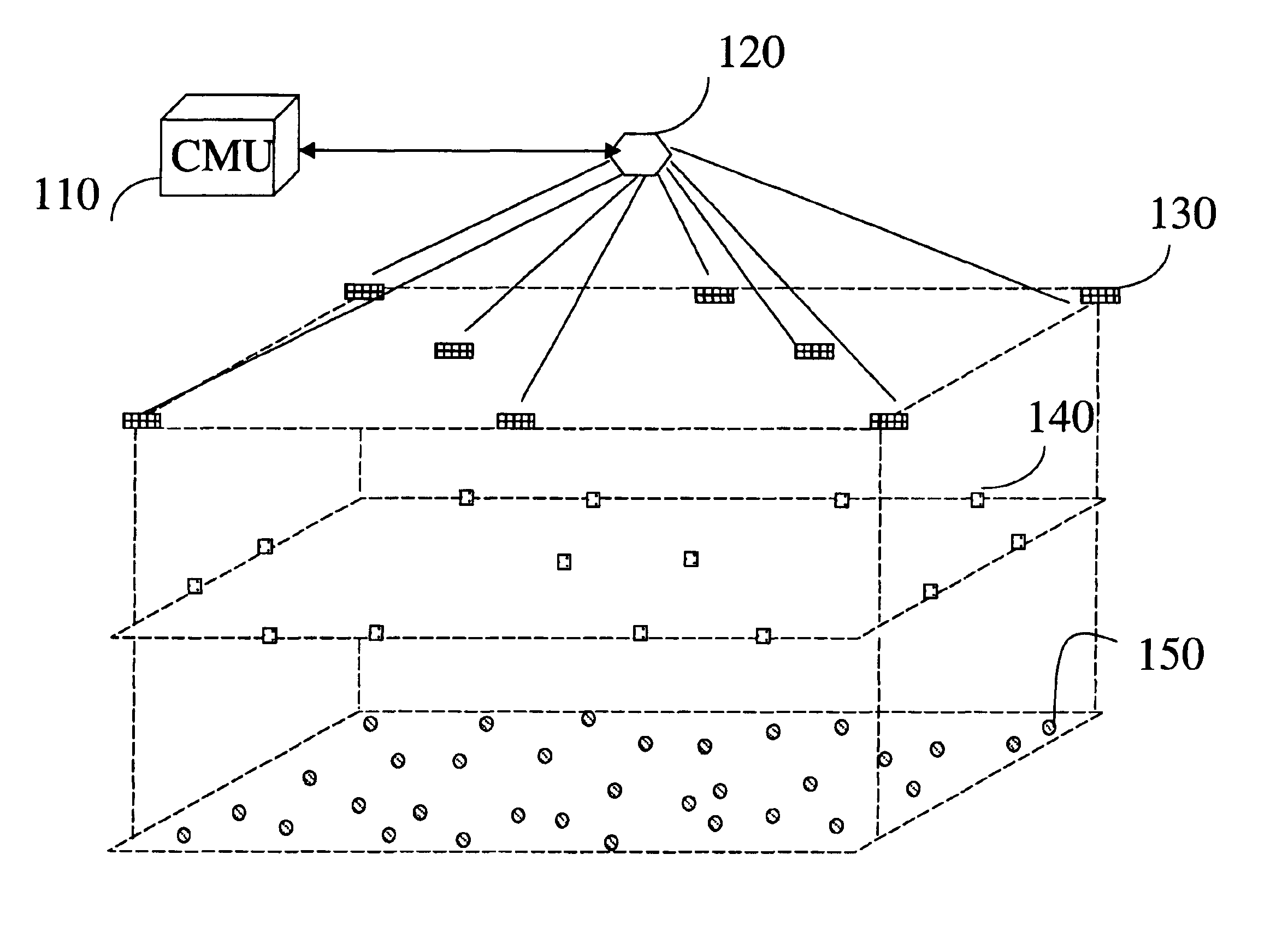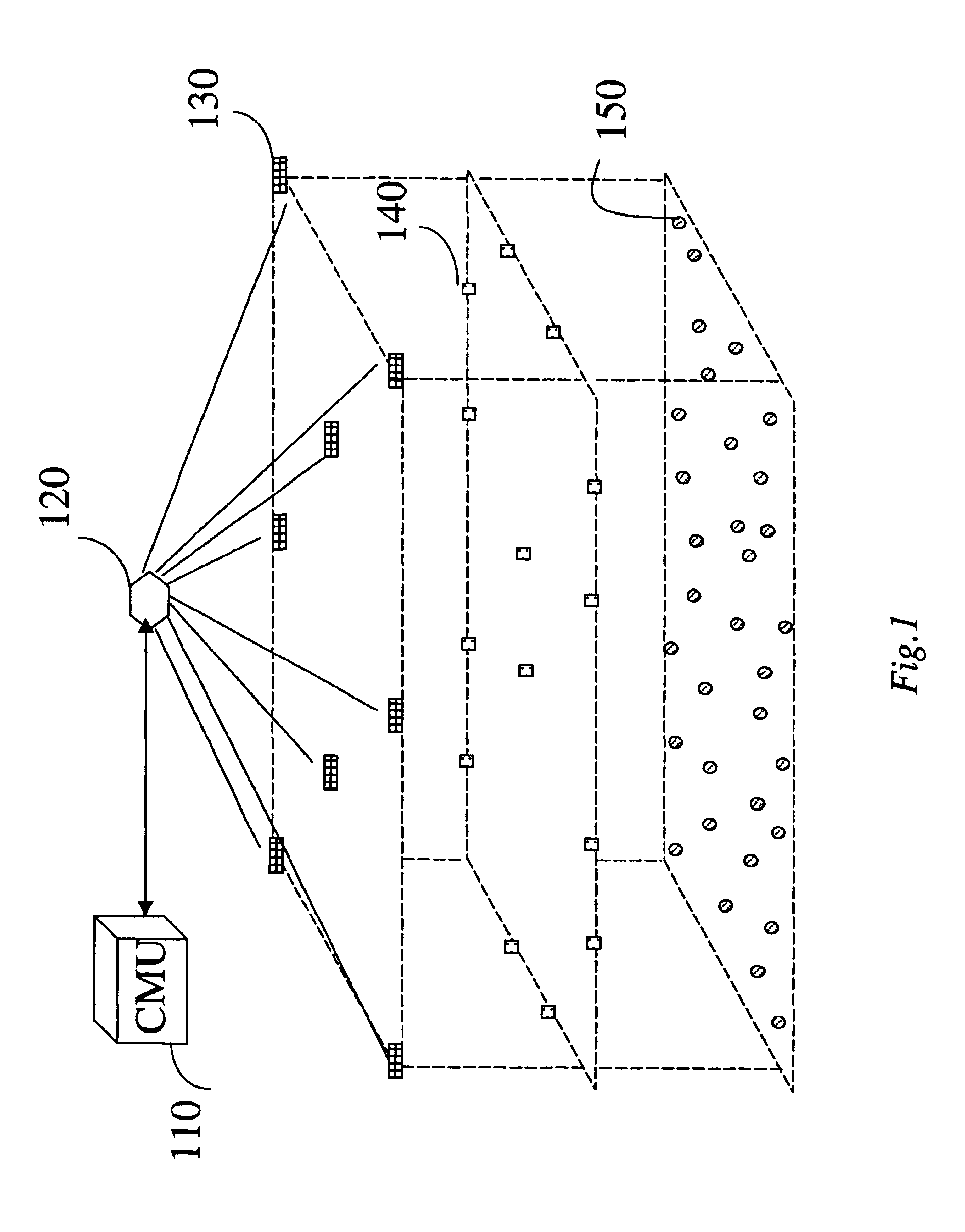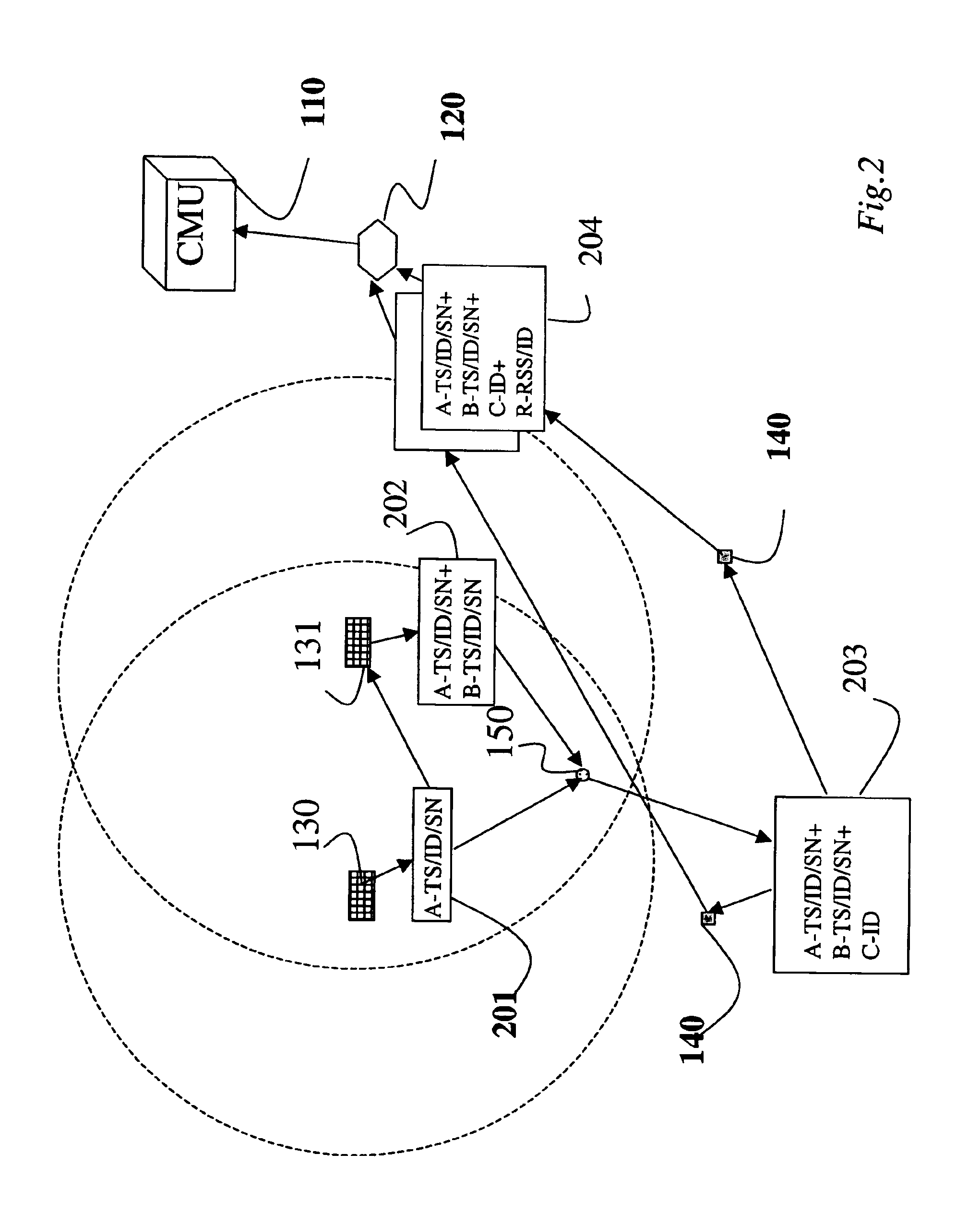Location estimation in partially synchronized networks
a technology of partial synchronization and location estimation, applied in the direction of data switching network, distance measurement, instruments, etc., can solve the problems of low-complexity sensors without time synchronization and means to measure signal strength, and achieve the effect of longer communication range capability
- Summary
- Abstract
- Description
- Claims
- Application Information
AI Technical Summary
Benefits of technology
Problems solved by technology
Method used
Image
Examples
Embodiment Construction
System Structure
[0025]My invention provides location estimation for mobile nodes in a wireless communication network lacking global synchronization. As a characteristic, the nodes for which locations are to be estimated are mobile, low-complexity, low-power, unsynchronized, and have a relatively short radio range, e.g., in the order of meters.
[0026]As shown in FIG. 1, my network has four types of nodes. Each node has a unique identification (ID). Each node can send and receive messages. Each message from a particular node has a sequence number (SN), thus any ID-SN uniquely identifies the node and the message. Only the position nodes have access to synchronized timing information.
[0027]The levels in FIG. 1 only indicate a hierarchy of the nodes for the purpose of this description. It should be understood that the nodes can be intermingled in a 3D environment in an arbitrary manner.
[0028]Position nodes 130 are stationary at known locations. Position nodes are time synchronized among t...
PUM
 Login to View More
Login to View More Abstract
Description
Claims
Application Information
 Login to View More
Login to View More - R&D
- Intellectual Property
- Life Sciences
- Materials
- Tech Scout
- Unparalleled Data Quality
- Higher Quality Content
- 60% Fewer Hallucinations
Browse by: Latest US Patents, China's latest patents, Technical Efficacy Thesaurus, Application Domain, Technology Topic, Popular Technical Reports.
© 2025 PatSnap. All rights reserved.Legal|Privacy policy|Modern Slavery Act Transparency Statement|Sitemap|About US| Contact US: help@patsnap.com



